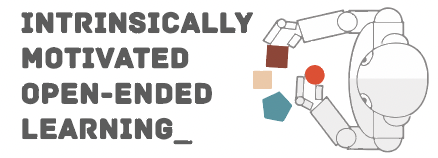 |
| Sylvain Calinon |
| speaker |
Bio
Sylvain Calinon is a Senior Research Scientist at the Idiap Research Institute, with research interests covering robot learning, optimal control, geometrical approaches, and human-robot collaboration. He is also a lecturer at the Ecole Polytechnique Fédérale de Lausanne (EPFL). The collaborative projects he is or has been involved in include SMART-DISPENSING, INTELLIMAN, SESTOSENSO, SWITCH, CODIMAN, COB’HOOK, LEARN-REAL, HEAP, NATAI, COLLABORATE, MEMMO, ROSALIS, DEXROV, I-DRESS, TACT-HAND, PLATFORM-MMD, STIFF-FLOP, PANDORA, SMART-E, SAPHARI, AMARSI, ROBOT@CWE, FEELIX GROWING and COGNIRON.
His work focuses on human-centered robotics applications in which the robots can acquire new skills from only few demonstrations and interactions. It requires the development of models that can exploit the structure and geometry of the acquired data in an efficient way, the development of optimal control techniques that can exploit the learned task variations and coordination patterns, and the development of intuitive interfaces to acquire meaningful demonstrations.
The developed approaches can be applied to a wide range of manipulation skills, with robots that are either close to us (assistive and industrial robots), parts of us (prosthetics and exoskeletons), or far away from us (teleoperation). His research is supported by the European Commission, by the Swiss National Science Foundation, by the State Secretariat for Education, Research and Innovation, and by the Swiss Innovation Agency.
Google scholar page • Personal webpage
Talk
Today’s developments in machine learning heavily focus on big data
approaches. However, many applications in robotics require interactive
learning approaches that can rely on only few demonstrations or trials.
The main challenge boils down to finding structures that can be used in
a wide range of tasks, which requires us to advance on several fronts,
including (from low level to high level): data structures, geometric
structures and combination structures, which I will discuss in my
presentation.
As example of data structures, I will discuss the use of tensor
factorization techniques that can be used in global optimization
problems to efficiently extract and compress information, while
providing diverse human-guided learning capabilities (imitation and
environment scaffolding). As examples of geometric structures, I will
discuss the use of Riemannian geometry and geometric algebra in
robotics, where prior knowledge about the physical world can be embedded
within the representations of skills and associated learning algorithms.
I will then provide a brief overview of combination structures, which
relate to movement primitive and behavior primitive representations in
robotics, that can be embedded within optimal control problem formulations.
